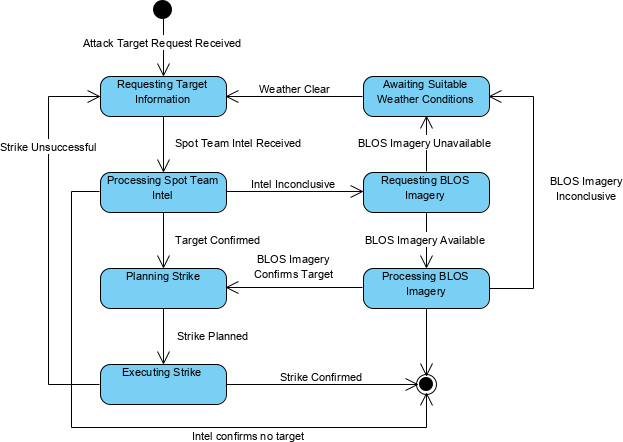The OV-6b is a graphical method of describing how an Operational Activity responds to various events by changing its state. The diagram represents the sets of events to which the Activities respond (by taking an action to move to a new state) as a function of its current state. Each transition specifies an event and an action.
Usage
The intended usage of the OV-6b includes:
- Analysis of business events.
- Behavioral analysis.
- Identification of constraints.
Product Description
An OV-6b depicts states and state transitions for an Operational Performer.
Creating a State Transition Description (diagram)
To create a State Transition Description diagram:
- Click on State Transition Description in the Action Artifact area, and then select Create New Diagram.
- You are creating a table for managing the state diagrams. Type a name for the table. You can create multiple tables based on different contexts (e.g. by phases, purposes, etc).
- This opens a table where you can create and manage state diagrams. Click on New Operational State Machines Definition above the table to create a new row.
- Under the first column, select the context to create a state diagram, which can be an OperationalArchitecture or OperationalPerformer.
- Under the second column, create the state diagram(s). The diagram created will be added to the selected context element as a sub-diagram.

DoDAF in Visual Paradigm
The DoDAF is brought to you by Visual Paradigm, a full-featured development platform. Visual Paradigm provides an easy-to-use, model-driven DoDAF tool that supports the development of DoDAF 2.02 views and models. You can create integrated DoDAF products and generate architectural documents that facilitate organizations to efficiently coordinate enterprise architecture initiatives.